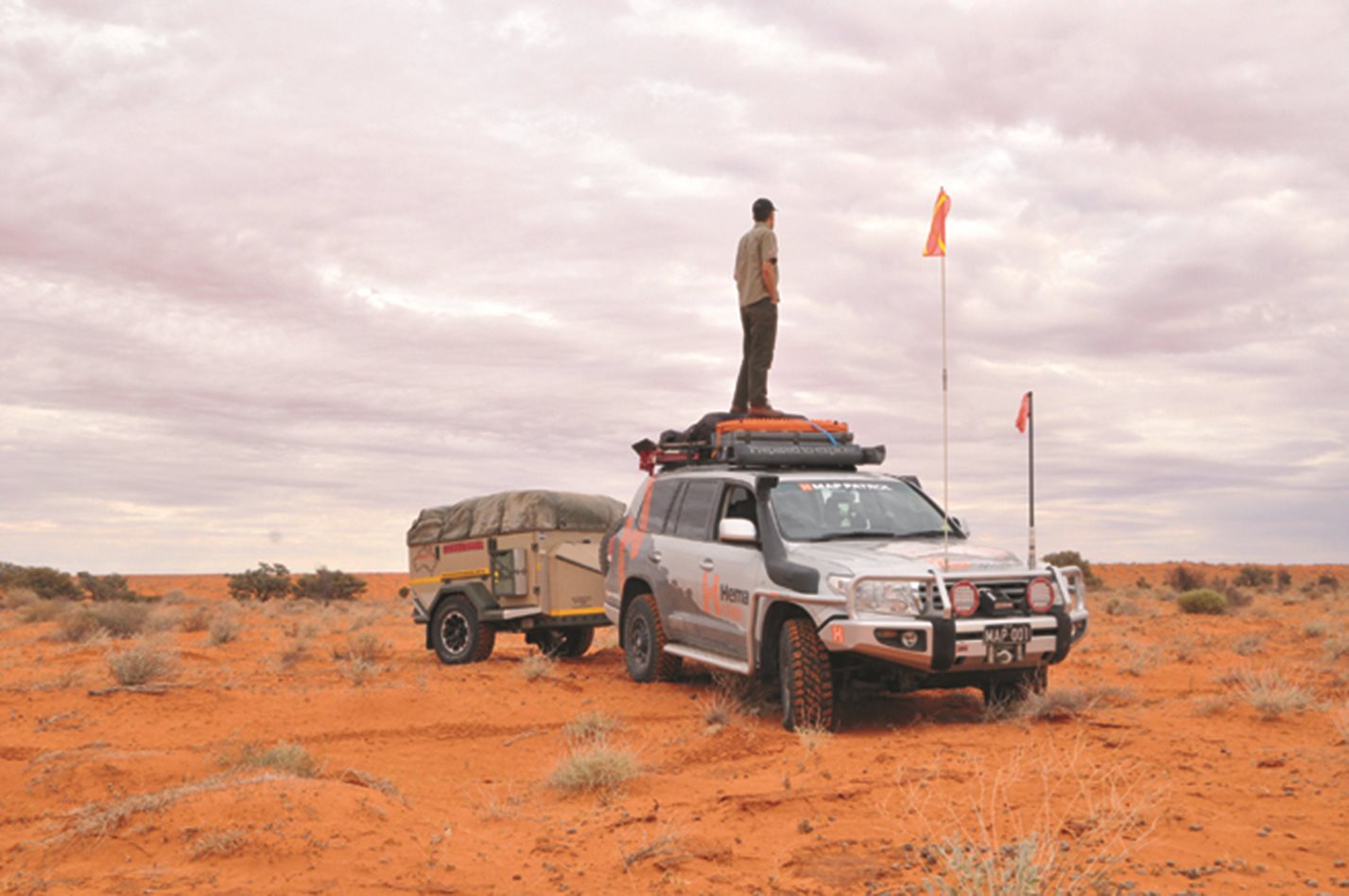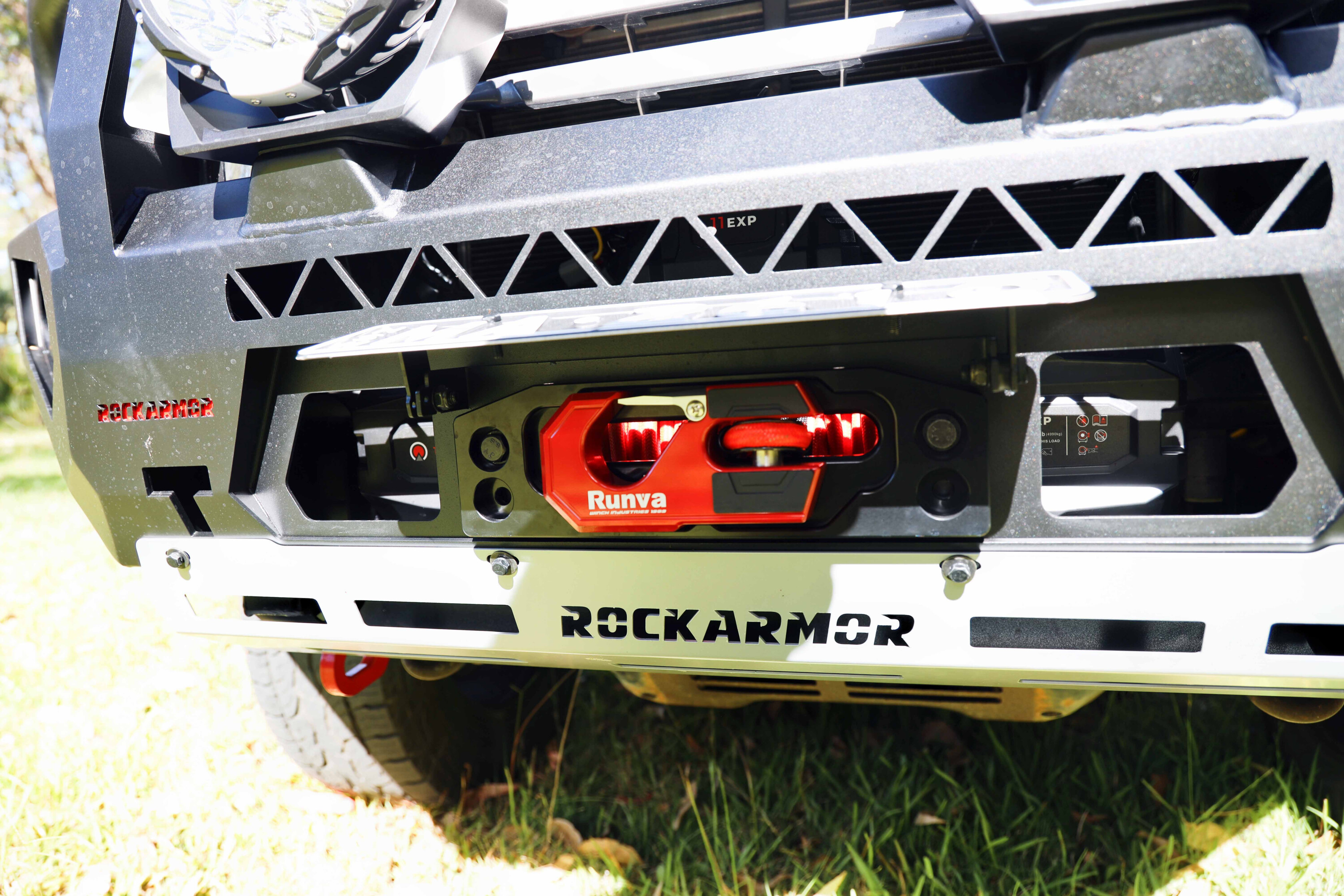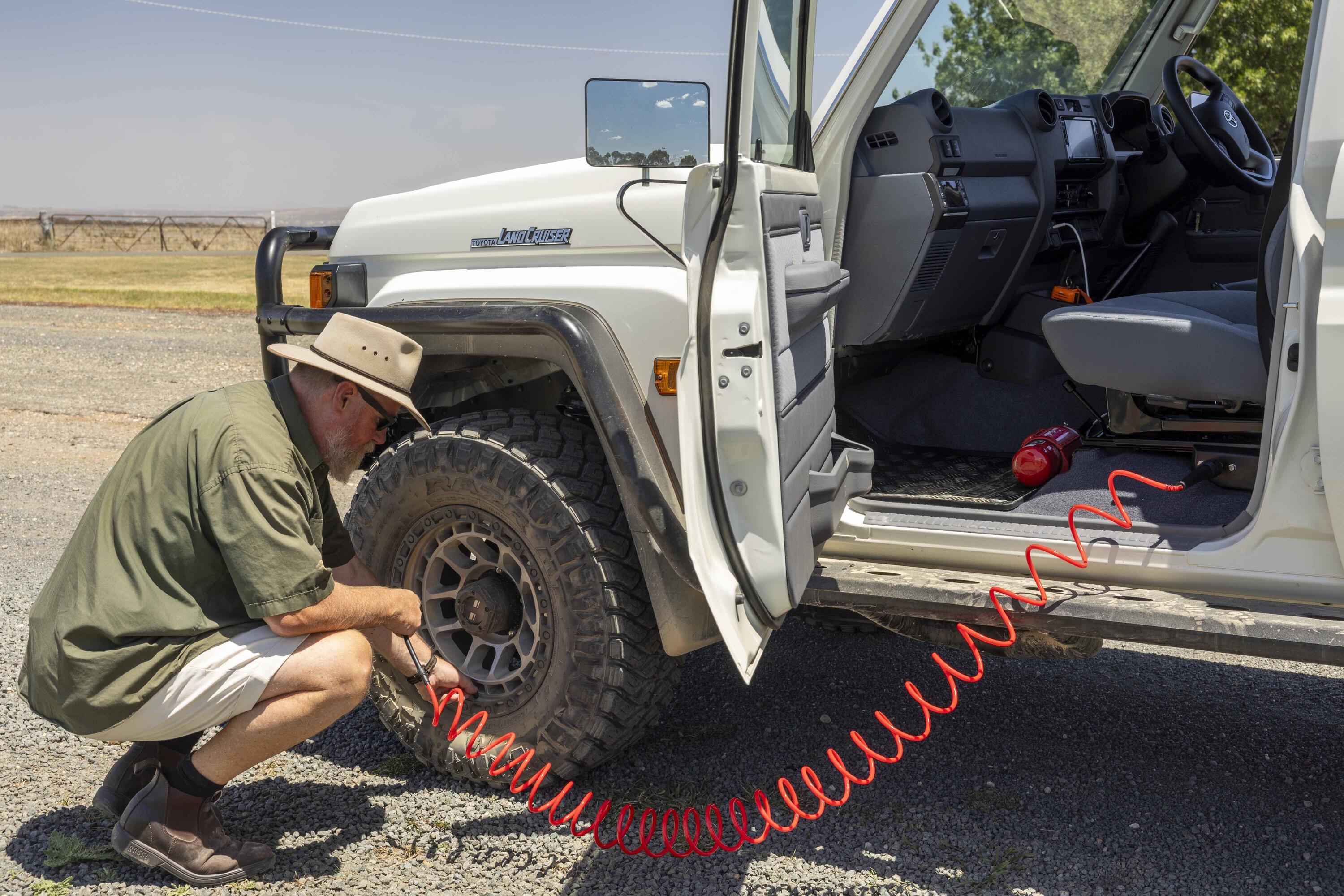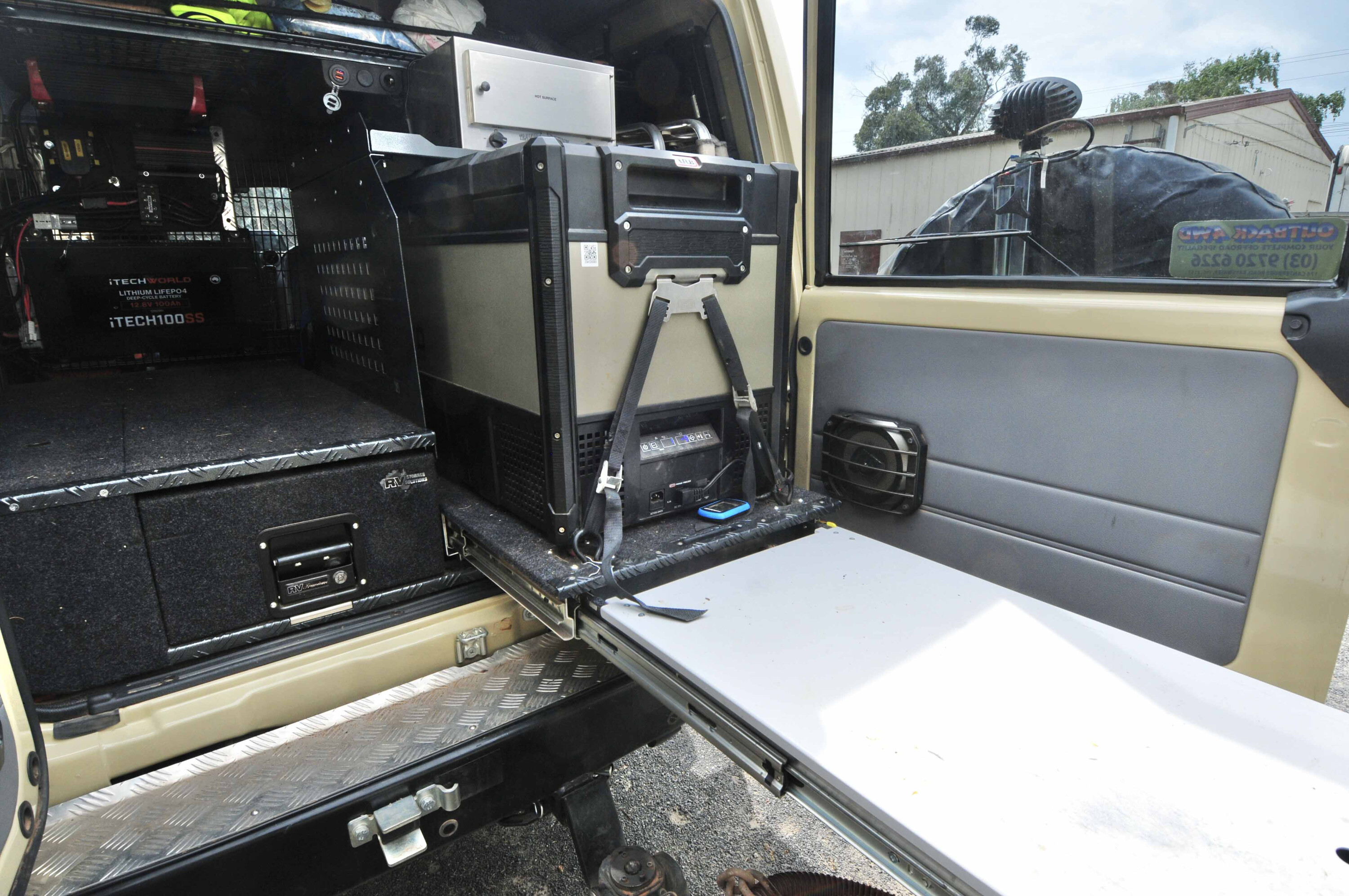Cold wind is whipping sand through the air from Big Red, one of the Simpson Desert’s tallest, and by far most famous, sand dunes. On the dune’s crest, a man is posing for a photo next to his Land Cruiser, the vehicle’s sand flag dancing violently. Nearby, six people are peering at various tablets, GPS devices and maps. They’re the Hema Map Patrol, adventure experts, and they’re busy preparing to cross the Simpson in search of new tracks.
Originally map sellers and distributors, Hema founders Henry and Margaret Boegheim were disappointed with the poor quality of maps, and the lack of maps available, for the rugged and remote regions they loved exploring, so they began making their own.
Their son and Hema Managing Director, Rob Boegheim, says this love of the road less travelled has always been a core philosophy of Hema. “If a track exists, people expect Hema to map it,” he says. “This happened to the Hay River Road in 2000. I’d heard that a few people were starting to travel through there of their own accord. When we felt the time was right we sent some mappers out and literally put the track on the map.”
On this trip the idea is to find a way to reach the geographical centre of the Simpson Desert using a 50-year-old network of shot lines bulldozed through the desert during the 1950s oil exploration. It takes the Map Patrol two days to reach the area of new tracks, as they’ve been busy fact checking their existing maps of the QAA line. Now, the two vehicles have paused in one of the most remote areas of the desert.
Being 50-year-old tracks, they’re hard to find. As Rob stands on top of one of the four-wheel drives, the others leg it around the area looking for any clues as to a shot line’s whereabouts. Someone spots a vague break in the trees and we’re off to see if it’s driveable and to explore where it leads.
“This is the stuff that gets my blood pumping,” Rob says. “I love seeing the same passion kick in to the rest of the team, because it reassures me that the Hema brand is in good, likeminded hands. We’re not afraid to venture down new roads literally, nor in a business sense.”
As we bump overland, Hema’s HN7 navigator GPS devices record our exact path. We’re recording where these ‘tracks’ are so that the team can return in 2015 and officially map them. Hema first used a GPS to create maps in 1996, and have since GPS plotted over 300,000km of Australian roads.
“In 1995 Dad and I started tinkering with a GPS plugged into a laptop, wondering if we could get that to work,” Rob says. “In January 1996 we did the first plotting trip with a GPS. I’d have to restart the computer every half an hour because it would crash.”
According to Senior Cartographer Pierre Kurth, there’s more to mapping than GPS plotting. Hema cartographers are responsible for designing maps to be as user friendly as possible by selecting the best colours, fonts, symbols and lines. Physical maps have very different design requirements to digital maps, but Pierre says that going to the land that’s being mapped is essential for understanding what’s required of a map.
“Unless you’ve been out here, you can’t understand the beauty of this place,” he says. “We have to map these areas that we’re driving through and coming here gives us a better idea of how to do that. There’s landmarks you can’t understand until you see them. Now that I’ve seen them, I’m already thinking about how to best represent them on a map.”
On this trip, Hema is also confirming its maps of existing tracks are up to date. The desert’s 1100 sand dunes are frequently changing, blown by the wind or cut up by unwary travellers who force new paths. Clearly visible on our HN7 is one track that has completely moved from Hema’s last visit.
Rob explains that Hema physically check maps every two years and is constantly calling towns and local businesses to verify facilities and opening hours to ensure that information is as up-to-date as possible.
Our desert crossing is a slow one as the Map Patrol stop at every decent-looking bush campsite, survey post and landmark. These are what they call ‘points of interest’, or POIs. Here, the team gathers rich media data, in the form of 360-degree images and videos, to embed into digital maps. This provides travellers with an idea of what they’re getting themselves into when crossing the Simpson.
For GIS Analyst and Fieldwork Administrator, Micah Brouwer, this collection of rich media forms the basis of his main current project. “I’m working on creating a POI database, where we collect, store and maintain this media,” he says. “Google Earth and Google Maps have pushed Hema along and smartphones are driving the revolution. The challenge for Hema is to provide this information offline. People think ‘well, if I can do this at home, I should be able to do this in the middle of the desert’.”
Eventually, Hema wants customers to be able to click on the QAA Line, one of the desert’s main tracks, and see a video of dune climbs so that they can experience exactly how rough the track is before they commit to a trip. For example, at the digital Poeppel’s Corner, travellers will be able to read the interesting history of the corner and see a bunch of images. According to Micah, the process of collecting this data is still being finalised to ensure it is efficient and accurate. The more accurate the field data, the less work that needs to be done in the office, he explains.
At one point, we stop at a campsite marked on the map, but it doesn’t look too inviting, so the team decides to leave it off. As we crest the next dune, the most beautiful sheltered and woody bush campsite appears, so the cameras and GPS devices come out to ensure that it’s mapped, and enough data collected to make it a point of interest. These handpicked and tested campsites are one of the reasons why Hema’s products are so popular, and this popularity has been evident throughout the journey. The Hema crew is frequently pulled over by 4WDers keen to chat to the famous Map Patrol. They’re asked to sign maps, answer technical questions about the maps, and the HN7, and just generally have a yarn about their trip.
“It’s essential to talk to our customers and get a good understanding of different types of travellers,” Micah says. “Not only is this trip a way for us to capture good data, but it reminds us of what our customers want and need and how they use our products. It’s also a great opportunity for us to get to know our team members.”
For Rob, talking to Hema product users having a ball in the outback is what it’s all about. “Our maps give people the confidence to go to a lot of places that maybe they wouldn’t otherwise go,” he says. “I think we’ve played a role in opening up the outback, which is a very, very special thing.”
THE GEAR
A 2012 Nissan Patrol and Toyota Land Cruiser 200 series, both diesels, make up the Map Patrol. Both fitted with Cooper Discoverer ST Maxx’s, they’re also equipped with ARB bullbars and roof racks. Inside, a collection of Hema Navigator devices are fitted to the windscreen, windows and lying loose amongst the collection of paper maps and Hema merchandise. The latest navigator model is the HN7; which the Hema team rely on to record the journey, note campsites and points of interest and accurately locate the vehicle.
THE TEAM
Although the Hema team consists of around 30 staff, there are six on this particular field trip. Managing Director Rob Boegheim, Senior Cartographers and GIS Analysts Silke Nawrocki and Pierre Kurth, Spatial Content Manager Tim Jones, GIS and Fieldwork Administrator Micah Brouwer and Project Director George Muratidis.
Get the latest info on all things 4X4 Australia by signing up to our newsletter.





